The WaterSense Current Summer 2008
Issue VII, Summer 2008
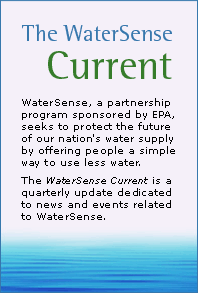 |
In This Issue: |
WaterSense, a partnership program sponsored by EPA, seeks to protect the future of our nation's water supply by offering people a simple way to use less water.
The WaterSense Current is a quarterly update dedicated to news and events related to WaterSense.
Get Smart! With Your Landscaping
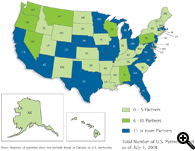
With summer in full swing, the arrival of July often means vacations, fireworks, and, of course, lawn care. If the dog days of summer leave you dog-tired, why not let your lawn worry about itself? Because July is Smart Irrigation Month, and because it's also the peak water-use month across most of the country, there is no better time to learn how employing smart irrigation technology can help save you water, time, and money.
Irrigation systems are a great way for people to water their yard without spending hours wrestling with a hose, but they can also lead to overwatering. Smart irrigation technologies, such as soil moisture sensors and weather-based irrigation controllers, allow for much more efficient watering. During peak water usage months, conserving your community's water supply is especially important, and using efficient irrigation practices can have a big impact.
Here to help you finetune your outdoor watering for optimum efficiency are WaterSense irrigation partners. These professionals have completed a WaterSense labeled program that certifies their expertise in water-saving technology and techniques. If homeowners with irrigation systems hired WaterSense irrigation partners to perform regular maintenance, each household could reduce irrigation water use by 15 percent. That's about 9,000 gallons annually—or the amount of water that would flow from a garden hose if you left it running nonstop for nearly a whole day.
The map above to the right illustrates where WaterSense irrigation partners are available to help you transform your time-consuming, water-guzzling yard into a modern model of efficiency. Find a nearby irrigation professional and bring specific, valuable expertise to your project. By hiring a WaterSense irrigation partner to audit, design, install, or maintain your irrigation system, you'll be making a smart investment in the future of our water supply.
Distribution of WaterSense Irrigation Partners by State. Click to enlarge.
One Audit That Shouldn't Scare You
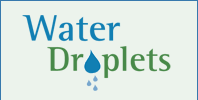
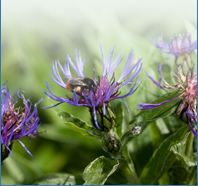
For many people, the word “audit” elicits the same response as, say, a root canal. This summer, however, an audit for your landscape irrigation system might be one appointment you won't want to miss. While water audits are available for both inside and outside the home, those for in-ground irrigation systems can lead to tremendous water savings this time of year.
A water audit is similar to a checkup for your sprinklers. A qualified professional investigates your new or existing irrigation system to ensure that it has been designed and installed to be as efficient as possible. An irrigation auditor will monitor the timer, valve system, piping, and wiring, and note where there are deficiencies and where improvements can be made. The auditor will also analyze the spray zones over the landscape to verify that water is being evenly distributed throughout the landscape, and will often review several months of water bills. The process usually takes one to two hours.
“It really puts the proof in the pudding,” says
Mark Brotton, principal of Living
Waters Irrigation & Landscape, LLC![]() ,
who is a WaterSense irrigation partner and a certified irrigation
auditor. “Don't just assume [your irrigation system]
will work great,” he continues. A water audit is a safeguard
to verify that you have received a high quality system.
,
who is a WaterSense irrigation partner and a certified irrigation
auditor. “Don't just assume [your irrigation system]
will work great,” he continues. A water audit is a safeguard
to verify that you have received a high quality system.
Additionally, a water audit can be the perfect place to start if you are considering upgrades to your system. Technology has advanced significantly in the past five years, and an audit can identify worthwhile upgrades for outdated systems. As Brotton explains, sprinkler systems require regular maintenance, just like your car. You wouldn't drive your car for three years without changing the oil or recalibrating the alignment. It's important to maintain your sprinkler system in a similar way.
Ways to tell that your system is wasting water include brown spots in the lawn or higher-than-normal water bills—and, of course, a geyser in your front yard. However, you should not wait for these problems to arise before scheduling your audit. A water audit is necessary preventative maintenance to guarantee that there are no problems and that you are maximizing efficiency in your system. Many in-ground irrigation systems are only about 50 percent efficient. If homeowners follow the recommendations of the auditor, they can expect up to a 20 percent improvement in the system's efficiency; and when it comes to water, every drop counts. Find a WaterSense irrigation partner near you.
Green Homes Resist Housing Market Slump
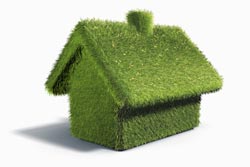
Good news for green homebuyers, builders, and sellers: while the traditional homebuilding market remains soft, demand for green homes—and green plumbing fixtures—is steadily growing across the country. WaterSense is proud to help lead this market.
Although housing demand is currently on a downswing, a recent McGraw-Hill Construction study predicts that green home building will generate between $12 billion and $20 billion in sales in 2008. These numbers represent a 6 to 10 percent market share that is expected to double over the next five years. And that's not all—demand for WaterSense labeled products could be picking up, too. The same survey reveals that water-efficient plumbing fixtures are high on the list of most used green building features, while 81 percent of builders said that water-efficient toilets and faucets are the most important water-saving options. In localities such as Santa Clarita or Riverside County, Calif., where builders must prove that adequate water supplies exist for new development projects, WaterSense labeled fixtures can be a critical addition.
In the two years since EPA launched the program, green building
professionals have increasingly turned to WaterSense as a resource
and authority on water efficiency and water-efficient products.
For example, the U.S. Green Building
Council (USGBC)![]() has incorporated WaterSense into its draft Leadership in Environmental
and Energy-Efficient Design (LEED) rating system for new homes.
Its 2009 LEED guidelines specify WaterSense labeled products to
be used where available to meet the water use reduction requirements.
The ReGreen Guidelines, a set of green remodeling guidelines developed
by the American Society of Interior Designers and USGBC, also encourage
consumers and professional remodelers to consult WaterSense labeled
products lists when looking for plumbing fixtures during home renovation
projects.
has incorporated WaterSense into its draft Leadership in Environmental
and Energy-Efficient Design (LEED) rating system for new homes.
Its 2009 LEED guidelines specify WaterSense labeled products to
be used where available to meet the water use reduction requirements.
The ReGreen Guidelines, a set of green remodeling guidelines developed
by the American Society of Interior Designers and USGBC, also encourage
consumers and professional remodelers to consult WaterSense labeled
products lists when looking for plumbing fixtures during home renovation
projects.
To further promote new home construction that is mindful of future water supplies, WaterSense is developing its own set of criteria. The recently released draft of the Water-Efficient Single-Family New Home Specification will combine WaterSense labeled plumbing fixtures and other water-efficient design features and appliances, such as dishwashers and clothes washers, to reduce the amount of water used by approximately 20 percent. The criteria will cover indoor and outdoor water use in addition to requiring builders to educate homeowners about their water-efficient new home. Learn more about the future WaterSense New Homes program.
Partner Profile: Irrigation Partner Victor Samson

The WaterSense Current periodically profiles outstanding WaterSense partners and their achievement in advancing water efficiency and water-efficient products and practices.
WaterSense partner Victor Samson of Kansas City, Missouri, is a certified irrigation designer (CID) and certified landscape irrigation auditor (CLIA) who advocates new technology and education in equal measure.
His company Samson Irrigation Systems manages and operates a number of sites—including shopping centers, sports fields, and a townhouse complex—using smart irrigation technologies that use weather data to determine whether a lawn or landscape needs to be watered. These technologies apply water based on weather station data, gauge how much rainfall the site has received, and monitor the water flow of each station in the system to detect leaks.
Whenever possible, Samson demonstrates to his customers how much water and money they are saving by using smart irrigation technologies. For example, at one townhouse complex where his company installed a smart controller, a valve malfunctioned only days after a visual inspection of the irrigation system. The smart controller detected the leak, shut off, and notified Samson to visit the site, where he repaired the problem. If the controller had not detected the broken valve, it probably would not have been noticed for a month or more. The leak flowed at 54 gallons per minute, and the watering cycle that night was scheduled to run for 6 hours and 45 minutes. In a month on this schedule, the leak could have wasted 262,000 gallons of water—equivalent to leaving your garden hose running for nearly a month—at a cost of approximately $500.
Samson explains the need to balance new technology with conscientious installation, repair, and maintenance. He says, “As a water manager, the computer central control with flow sensing gives us great ability and confidence in properly managing an irrigation system. But the key is to balance 'high- tech' central control with 'low-tech' by putting the head in the ground properly.”
Stand Up for Water Efficiency
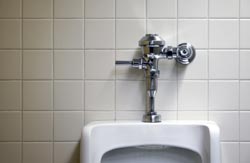
Approximately 80 percent of America's estimated 12 million urinals are old and water-wasteful, a problem WaterSense hopes to remedy. In May 2008, EPA issued a notification of intent to develop specifications for high-efficiency urinals. Once finalized, the specification would be used to label these fixtures, making it easier to identify efficient, high-performing urinals and to capitalize on this tremendous water savings opportunity. In the notification of intent, EPA has identified preliminary criteria, as well as technical issues to weigh.
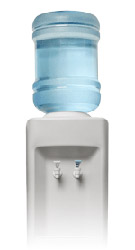
Take a cue from one of your fellow WaterSense Current readers and try this water-saving tip.
“My neighbor has a front lawn that is on a slight slope. Every time she irrigates, water runs off onto the sidewalk and into the gutter. I asked her how long she watered, and she said about 15 minutes. I suggested she adjust her sprinkler timer to water for four minutes, three times each morning for a total of 12 minutes. She was afraid that wouldn't be enough water, but gave it a try. She reset the timer to come on at 3 a.m., 4 a.m., and 5 a.m. for four minutes each time. The results are incredible. She says the lawn looks even better than before, and she is saving nearly 30 gallons per day.”
— Chris Dundon, from Martinez, Calif.
Have a water-saving idea to contribute? E-mail it to the WaterSense Helpline.





